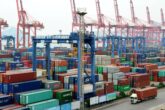February 09, 2018
“Unmanned, Intangible, Silent Warfare” – New Threats and Options for Taiwan
As the character of conflict is transformed by the advent of robotics and artificial intelligence on the battlefield, the Chinese People’s Liberation Army (PLA) recognizes and seeks to capitalize upon this trend towards “unmanned, intangible, silent warfare” (無人, 無形, 無聲戰爭) that is increasingly “intelligentized” (智能化). Consequently, the PLA has prioritized advances in military robotics and ‘unmanned’ (i.e., uninhabited) systems. To date, the PLA has fielded a range of unmanned aerial vehicles (UAVs), while also developing and, to a limited extent, fielding unmanned underwater vehicles (UUVs), unmanned ground vehicles (UGVs), and unmanned surface vehicles (USVs). Concurrently, the Chinese defense industry is actively pursuing research and development for a range of cutting-edge unmanned systems, including those with stealth, supersonic, and swarming capabilities. The PLA is also prioritizing the development of military applications of artificial intelligence (AI), including to enable data and intelligence fusion and to support command decision-making. In the near future, unmanned and autonomous systems could serve as a force multiplier for the PLA’s combat power.
For Taiwan, the PLA’s pursuit of and ongoing advances in these capabilities are cause for concern. As Ian Easton of the Project 2049 Institute noted in his recent book, TheChinese Invasion Threat, such a scenario would likely include the use of unmanned systems to support initial strikes and an amphibious assault alike. The PLA appears to be preparing to leverage unmanned systems for a range of missions, including intelligence, surveillance, and reconnaissance (ISR); integrated reconnaissance and strike; information operations, especially electronic warfare; and data relay, including communications relay and guidance for over-the-horizon (OTH) targeting. Notably, continued progress in swarm intelligence (集群智能) could enable asymmetric assaults against major US weapons platforms, such as aircraft carriers. For instance, China’s Military Museum includes in one exhibit a depiction of a UAV swarm combat system (無人機蜂群作戰系統) with swarms used for reconnaissance, jamming, and “swarm assault” (群打擊) targeting an aircraft carrier. Recognizing the potential of “saturation attacks” to overcome even sophisticated defenses, the PLA could leverage similar tactics against Taiwan, and reportedly there have been efforts to convert retired fighter jets for this purpose. Concurrently, the PLA Navy is likely to acquire and employ unmanned surface vessels (USVs) that could be used troop transport or logistic support, and the PLA Marine Corps might even utilize unmanned tanks or amphibious combat vehicles in support of a future landing campaign.
Read the full article at the Global Taiwan Institute.
More from CNAS
-
Trump Administration Realises That The Tariff Strategy Has Backfired: Lisa Curtis
Trump administration realises that the tariff strategy has backfired, says Lisa Curtis, senior fellow and program director at the Center for a New American Security.Watch the ...
By Lisa Curtis
-
Ep 187: Richard Fontaine on the “Reverse Kissinger”
Richard Fontaine, CEO of the Center for a New American Security (CNAS) and co-author of No Limits? The China-Russia Relationship and U.S. Foreign Policy, joins the show to dis...
By Richard Fontaine
-
Siliconsciousness: The AI Competition: Public Policy Strategies: Part 1
This episode comprises the first part of our special event, “The AI Competition: Public Policy Strategies”. The event, co-hosted by MIT Technology Review, brings together some...
By Dr. ED McGrady
-
A Stroll Through the Indo-Pacific, the Most Important Region in the World
In this episode, we get into what’s driving the Indo-Pacific’s security dynamics, from China’s threats to Taiwan to AUKUS and the Quad to stability (or lack thereof) on the Ko...
By Lisa Curtis




